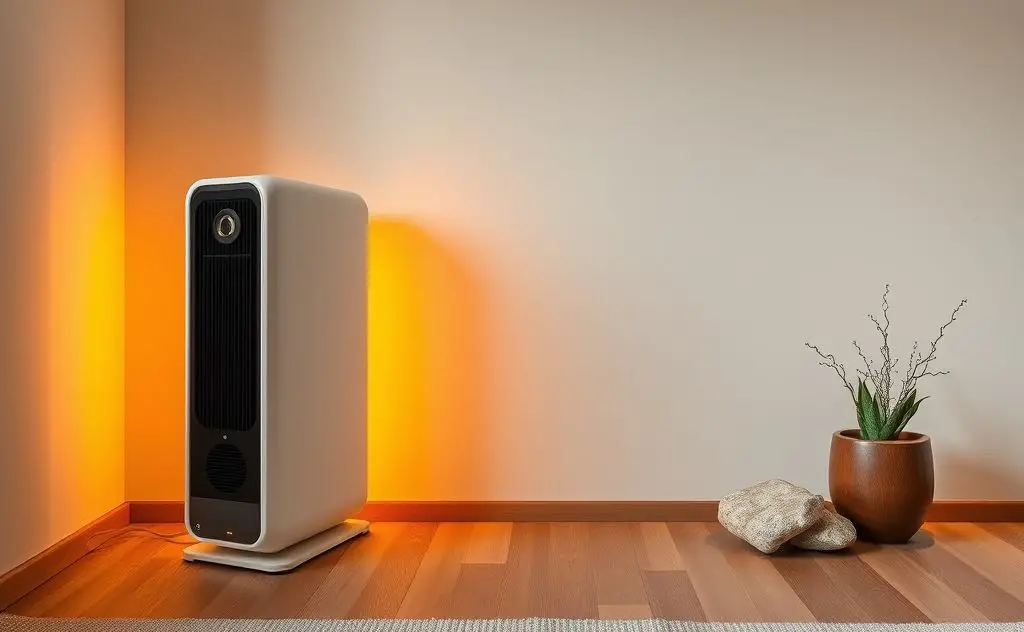To incorporate natural elements into modern heater design, use materials like wood or stone, and integrate organic shapes and earthy colors for a harmonious look.
Modern heaters no longer need to clash with your interior design. By incorporating natural elements like wood, stone, and plants, you can create a heating solution that enhances both functionality and aesthetics. This approach aligns with biophilic design principles, which improve well-being through nature-inspired spaces.

Why Natural Elements Matter in Heater Design
Research shows that exposure to natural elements reduces stress and improves cognitive function. When applied to heater design, these principles create spaces that feel warmer in both temperature and ambiance. A Terrapin Bright Green study found that biophilic design can increase productivity by 8% and well-being by 13%.
The Science Behind Nature-Inspired Heating
Our brains respond positively to natural materials. Wood grain patterns lower blood pressure, while stone textures create a grounding effect. When incorporated into heaters, these materials make the technology feel more organic and less intrusive.

5 Ways to Incorporate Nature Into Modern Heaters
1. Wood Accents and Casings
Replace plastic covers with sustainable wood options:
- Reclaimed barn wood for rustic charm
- Bamboo for contemporary spaces
- Walnut or oak for mid-century modern designs
Consider the wood-effect electric heaters that mimic traditional stoves without the maintenance.
2. Stone and Mineral Elements
Natural stone isn’t just for fireplaces:
| Material | Benefits |
|---|---|
| Soapstone | Retains heat longer |
| Slate | Modern aesthetic |
| Quartz | Durable and stylish |
3. Living Plant Integration
Combine heating with greenery:
- Wall-mounted heaters with built-in planters
- Radiator covers that double as herb gardens
- Heat-tolerant plants like snake plants near units
4. Water Features
Humidifying heaters with visible water elements create a spa-like atmosphere. The sound of trickling water enhances relaxation while the heater operates.
5. Natural Light Enhancement
Position heaters near windows to combine warmth with sunlight exposure. For darker spaces, consider heaters with solar-inspired lighting effects.
Technical Considerations
When blending nature with technology:
- Ensure proper clearance for wood elements (typically 12-18 inches)
- Choose heat-resistant plants (most tolerate up to 85°F)
- Select stones with high thermal mass for better heat retention
Case Studies: Successful Natural Heater Designs
The BioFire
This innovative heater combines real flames with clean ethanol fuel, surrounded by natural stone or wood bases. It provides both visual and physical warmth without venting requirements.
Living Radiator Covers
European designers are creating radiator enclosures with integrated hydroponic systems. These grow herbs while efficiently dispersing heat through natural convection.
Maintenance Tips
Natural elements require special care:
- Seasonal oiling for wood components
- Regular dusting of stone surfaces
- Monitoring plant health near heat sources
For those considering a complete system, explore built-in gas heaters with natural finishes that offer both efficiency and design flexibility.

